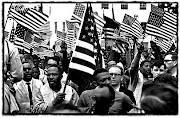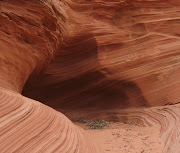

 streets that form the race course. Centuries of people running with the Bulls plays out with red ties and scarfs to commemorate the opening of Sanfermines or the San Fermín festival. Scores of people get hurt by being trampled by their fellow celebrants as iron gates swing open to start the bull run. This year, one Irish lad fell off the wall to his death while others suffered glancing or near goring from riled up bulls who are tired of the taunts, noise and screams. Nowadays, there are multi-lingual guides with highlighted safety tips for the stupid that detail all manner of things about the festival. A loud rocket sounds letting the less foolhardy run for cover, clamber up walls or hide like a sane person behind concrete barriers along the half-mile or 825 meter race course. As the gate opens, all the bulls get through the gate and another blast of a rocket goes out to let the crowd know when the last bull is let loose. Great. The final act is the corrida (bull fight) which sends members of PETA into orbit annually as they find new and different ways to express with or without clothes their displeasure at the rite.
streets that form the race course. Centuries of people running with the Bulls plays out with red ties and scarfs to commemorate the opening of Sanfermines or the San Fermín festival. Scores of people get hurt by being trampled by their fellow celebrants as iron gates swing open to start the bull run. This year, one Irish lad fell off the wall to his death while others suffered glancing or near goring from riled up bulls who are tired of the taunts, noise and screams. Nowadays, there are multi-lingual guides with highlighted safety tips for the stupid that detail all manner of things about the festival. A loud rocket sounds letting the less foolhardy run for cover, clamber up walls or hide like a sane person behind concrete barriers along the half-mile or 825 meter race course. As the gate opens, all the bulls get through the gate and another blast of a rocket goes out to let the crowd know when the last bull is let loose. Great. The final act is the corrida (bull fight) which sends members of PETA into orbit annually as they find new and different ways to express with or without clothes their displeasure at the rite.
 young
young 
Spain lists as second, with 40, for the most UNESCO World Heritage Sites in one country. The arts pay homageProfessional matadors fight, and invariably kill, the bulls each afternoon of the festival.
The fiesta, which ends July 14, is known also for its all-night street parties.
Tuesday's run used bulls from the southern Cebada Gago ranch, considered among the most dangerous in San Fermin. In 27 years, they have gored more than 35 people.
 to the history of bulls and bull fighting. Antiquity shows the worship of bulls at Knossos. In España, during the 19th century, Francisco de Goya made his famous etchings of the recortes or Basque-Navarre bull fighting style. The bull lives to a ripe old age with this style. Edouard Manet did a famous rendering of a gored matador in Dead Bullfighter (1864-1865).
to the history of bulls and bull fighting. Antiquity shows the worship of bulls at Knossos. In España, during the 19th century, Francisco de Goya made his famous etchings of the recortes or Basque-Navarre bull fighting style. The bull lives to a ripe old age with this style. Edouard Manet did a famous rendering of a gored matador in Dead Bullfighter (1864-1865).Ernest Hemingway, one of the top 100 books of all
 time according to some literary critics The Sun Also Rises (1926) is the best way to experience Pamplona and The Running of the Bulls. Who needs the actual goring - neither human or bull enjoys it.
time according to some literary critics The Sun Also Rises (1926) is the best way to experience Pamplona and The Running of the Bulls. Who needs the actual goring - neither human or bull enjoys it.










No comments:
Post a Comment